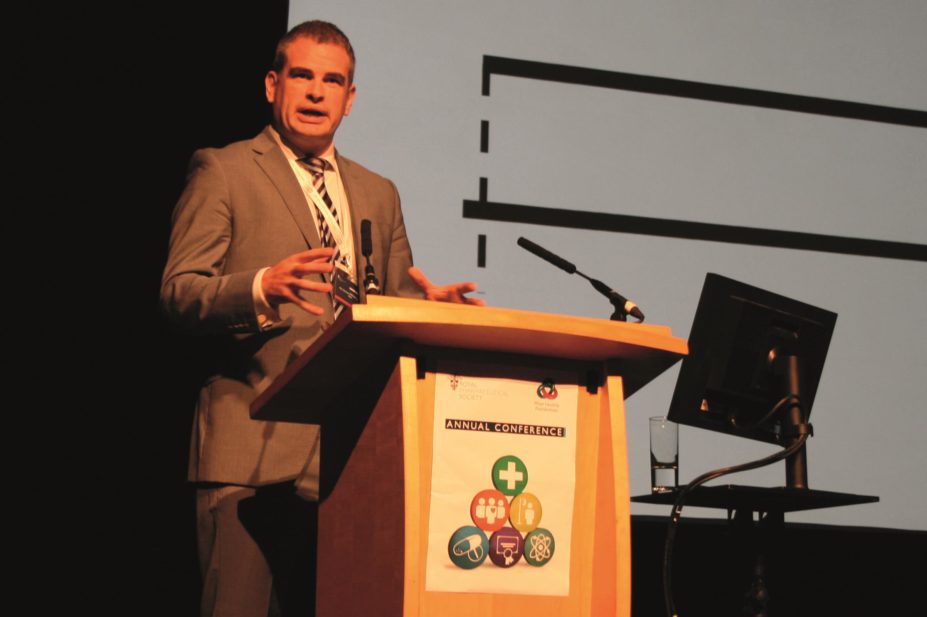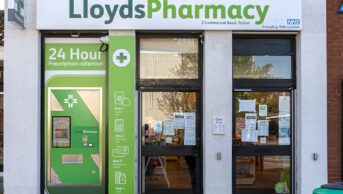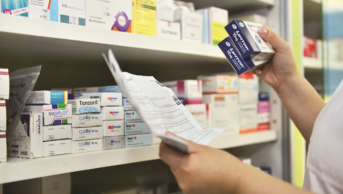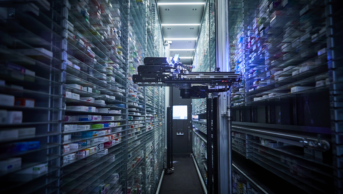
Royal Pharmaceutical Society
Hub and spoke dispensing can be the right model for community pharmacy, Boots UK chief pharmacist Marc Donovan announced at the Royal Pharmaceutical Society annual conference on 5 September 2016.
However, for the dispensing model to work, there will need to be a registered pharmacy and a registered pharmacist in both the hub and the spoke, he added.
“It would also be highly disruptive if we were to separate the supply of medicines with the provision of pharmacy services,” he explained, adding that the NHS, pharmacists and patients all valued these services.
During his talk on redesigning pharmacy services, Donovan told delegates there would need to be substantial changes to the way the pharmacy profession operates in light of budgetary pressures. He said community pharmacy must “embrace technology” and deliver more services.
Outlining his ideas for how community pharmacy might change, he said that there would need to be an increased role for pharmacy technicians, greater automation of dispensing, more clinical roles for pharmacists, some registration of patients at pharmacies and a different remuneration model for services. But he added that without an engaged workforce, it would be hard to enact change.
“Of course to reach this vision, we need our pharmacists to be more clinical,” he said.
However, Donovan quickly explained that to suggest that pharmacists were not already clinical was “quite insulting”, and went on to outline some of the projects that Boots has embarked on in order to develop a more clinical workforce. He said that by June 2017, the company would have 250 independent prescriber pharmacists delivering “high impact services in primary care”.
Donovan went on to explain that the government cannot continue to fund and resource the NHS in the way that it has been in the past because of an increasing number of patients with complex needs. “Services need to be driven by patient insight and underpinned by evidence and we recognise that this needs to be supported by contracts,” he said.
Donovan drew attention to the success of the community pharmacy influenza vaccination service and to the potential cost savings of the Community Pharmacy Future project — a collaborative initiative between Boots, Lloydspharmacy, Rowlands Pharmacy and Well, which piloted pharmacy services.
For example, Donovan said that it had been estimated that the “NHS would see a saving of over a quarter of a billion pounds from just the COPD [chronic obstructive pulmonary disease] case finder service”, in which pharmacists identify patients at risk of COPD.
He gave Boots’ sore throat service as another example, explaining that it prevented two thirds of participants who would have usually visited their GP from doing so.
Norman Lannigan, head of the pharmacy and prescribing support unit at NHS Greater Glasgow and Clyde, also spoke at the RPS conference on the subject of redesigning pharmacy services, and said that pharmacy was willing to embrace new technology.
Lannigan has recently been involved in setting up a project trialling robotics technology in community pharmacy and told delegates that 56 community pharmacies came forward to take part.
The pilot aims to help define the role of technology in releasing pharmacist capacity to deliver patient facing pharmaceutical care. Lannigan said he hopes the pilot will help to answer some of the questions about how new technology can be employed in community pharmacy.


